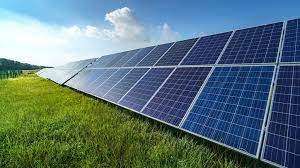Are you considering investing in solar panels for your home or business but are a bit hesitant due to the cost? It’s natural to have reservations about the initial investment that solar panels require. However, you might be surprised to know that solar panels have advanced and become more accessible, while decreasing in cost. One of the essential factors to consider when evaluating solar panels is the Price-Performance Ratio (PPR). In this post, we’ll explore all you need to know about the PPR of Solar cells and how it impacts the overall value of your solar panel system.
1. What is Price-Performance Ratio, and Why is it Important?
The PPR of buy solar cells (köpa solceller) is the ratio of the cost of the system to the energy output of the system. With the recent advancements, solar panel prices have dropped considerably while output efficiency has increased. PPR is a helpful metric to evaluate your investment in a solar panel system. A higher PPR value means that you’re getting the best value for your money.
2. Calculate Potential Savings with Solar Panels
One of the primary benefits of installing solar panels is the long-term cost savings. A solar panel system can significantly reduce your energy bills by converting sunlight into electricity, ultimately cutting down expenses. Inspect your energy bills and evaluate your daily energy consumption. Then, based on it, calculate your potential average monthly savings with solar panels.
3. Research the Different Types of Solar Panels
There are different types of solar panels available, such as Monocrystalline, Polycrystalline, and Thin-Film solar panels. Each type has its pros and cons, including output efficiency, durability, and the cost factor. Do your research to figure out which panel type is best suited to your needs based on sun exposure in your area, climate, energy output efficiency, and lifespan.
4. Check for Tax Incentives and Rebates
You can reduce your solar panel investment cost further by taking advantage of tax incentives and rebates. Several countries offer their respective discounts and incentives for installing solar panels. Check with your government agencies or a solar panel expert to know more about the available tax incentives and rebates in your region.
5. Choose the Right Installer
Your solar panel system is only as good as the installer. Do your research to find reputable solar panel installers in your area, and compare their prices and services quality. It’s also essential to check their experience, customer reviews, and warranties provided.
Conclusion:
Investing in solar panels is both a financial and environmental choice. When investing in solar panels, the PPR of Solar cells is a crucial guideline to determine the value of your investment. By considering PPR, calculating potential savings, investigating different types of solar panels, checking tax incentives, and hiring the right installer, you can ensure the most significant return on investment. With this comprehensive guide, investing in Solar cells will be a step towards a more sustainable and cost-effective energy solution.



